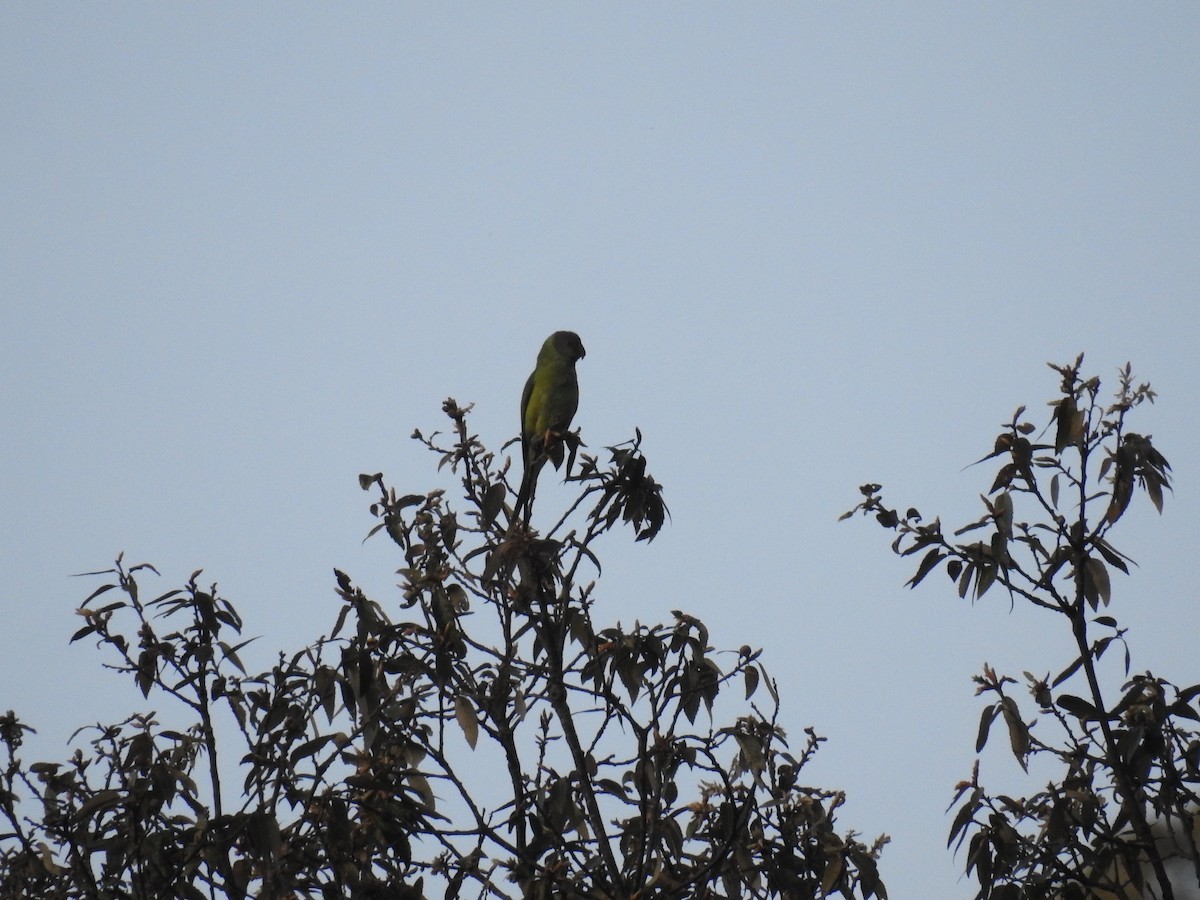Slaty-headed Parakeet
A species of Ring-necked Parakeets Scientific name : Psittacula himalayana Genus : Ring-necked Parakeets
Slaty-headed Parakeet, A species of Ring-necked Parakeets
Botanical name: Psittacula himalayana
Genus: Ring-necked Parakeets
Content
Description General Info
 Photo By Ashwin Viswanathan
Photo By Ashwin Viswanathan Description
Adults of both genders have green (tinted with blue) feathers on most of their body. It has a dark grey (slate colored) head with a light blue tint where head meets the neck. Males feature dark maroon patches on inner wing coverts. Females do not feature these maroon patches. Males have long central tail feathers which are shorter in female birds. The tail is green at base and becomes deep blue and widely tipped with bright yellow. The parakeet features a bright red-orange upper mandible with a pale yellow lower. It also has a pale yellow eye. 
Size
41 cm
Nest Placement
Cavity
Feeding Habits
Slaty-headed Parakeet's diet consists of berries, seeds, flowers, and pods from various plants, with a known penchant for raiding orchards and cornfields. Foraging behaviors include seeking food both in trees and agriculture areas, showing their adaptation to diverse food sources.
Habitat
The slaty-headed Parakeet thrives in subtropical woodlands, encompassing both coniferous and broadleaved deciduous forests, with a preference for areas rich in deodar trees. These birds are also accustomed to cultivated landscapes where tall trees are abundant, allowing for ample nesting and foraging opportunities.
Dite type
Herbivorous
General Info
Feeding Habits
Bird food type
Behavior
The species is usually found at elevations of 460–2400 meters in its natural habitat of highland/hillside forest and valley woodlands. They are usually observed in small flocks or family groups in search for their diet of various fruits (wild and agriculturally grown), nuts, pine nuts, seeds, nectar, and acorns. Multiple larger flocks are usually seen near the end of the wet season, where they descend into the valleys for most of winter. It is common for to see them mingle with other parakeet species such as the rose-ringed parakeet, plum-headed parakeet, and blossom-headed parakeet. Females usually lay 4-5 eggs of about 28.5 x 22 mm. The eggs incubate for approximately 23–24 days before hatching. In their Afghanistan range, this bird will often nest in abandoned nest cavities of the scaly-bellied woodpecker, and these species may nest in close proximity to each other for security against predators. The slaty-headed parakeet usually breeds within the months of March–May. It has as typical lifespan of 15–17 years. 
Distribution Area
The slaty-headed parakeet has a wide range throughout the Himalayas and surrounding areas. This bird is found is western Bhutan, most of Nepal, and in the following the Indian states; Sikkim, Uttarakhand, Himachal Pradesh,(southern) Jammu and Kashmir. It is can also be found in a small area north of Islamabad and in the southern areas of the Federally Administered Tribal Areas in Pakistan. The bird can also be found in small pockets of mountainous areas in the provinces of Kabul, Logar, Nangarhar, and Paktia in Afghanistan. 

 Photo By Ashwin Viswanathan
Photo By Ashwin Viswanathan Scientific Classification
Phylum
Chordates Class
Birds Order
Parrots Family
Parrots Genus
Ring-necked Parakeets Species
Slaty-headed Parakeet